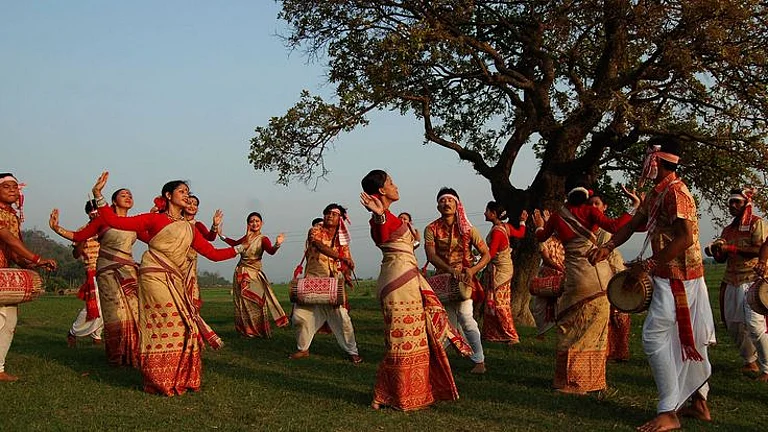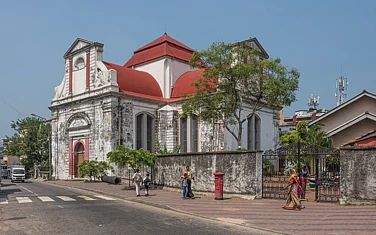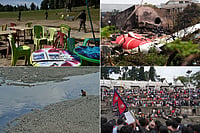In the heartlands of rural India, where tradition runs deep and the bond between nature and the divine remains strong, Naag Panchami is more than just a religious festival. Celebrated on the fifth day of the bright half of the lunar month of Shravana (July-August), it is a day dedicated to the worship of snakes, particularly the cobra. But beyond its popular image lies a deeper, often overlooked truth, Naag Panchami is also a gateway into the world of folk deities, many of whom are slowly fading from public memory.
The Worship of Serpents in Indian Culture
India has long held a sacred relationship with serpents. Snakes are seen as powerful beings, protectors of water sources, and symbols of fertility and rebirth. In Hindu mythology, the serpent god Shesha supports the world on his many hoods. Lord Shiva wears a cobra around his neck. Lord Vishnu rests on the cosmic serpent Ananta. But Naag Panchami, unlike these pan-Indian mythologies, is more closely tied to the local practices and beliefs of villages and small towns.
On this day, people offer milk, flowers, turmeric, and vermillion at snake holes and temples. Women especially pray for the wellbeing of their brothers and families. Clay or silver snake idols are worshipped in homes. In some areas, live cobras are even brought by snake charmers, worshipped with great reverence, and then released back into the wild.
Folk Deities Linked to Snake Worship
Across India, there are many lesser-known deities who are associated with snakes. These folk gods and goddesses are often worshipped only in particular regions, and their stories are passed down through oral tradition, songs, and rural rituals rather than written texts.
One such goddess is Maa Manasa, widely worshipped in Bihar, Bengal, Assam, Jharkhand, and Odisha. She is known as the goddess of snakes and is believed to cure snake bites, protect devotees from snake-related fears, and bless them with fertility and prosperity. Her worship is especially popular among women and is often seen as a parallel tradition outside the mainstream Brahmanical Hindu fold.
Another figure is Devta Vasuki, revered in parts of Himachal Pradesh and Uttarakhand. Local legends describe Vasuki as the king of serpents, and temples dedicated to him are often located near springs or rivers. Farmers seek his blessings for good rainfall and protection of crops.
In Karnataka, Subrahmanya or Kukke Subramanya is worshipped as the lord of snakes. Pilgrims visit the famous Kukke Subramanya Temple to perform rituals such as Sarpa Samskara, believed to remove doshas or curses related to serpent spirits in one’s ancestral lineage.
In Maharashtra and parts of Madhya Pradesh, rural communities worship Nagoba or Nag Devta, often represented by simple stone idols beneath peepal or neem trees. These shrines are maintained by the village community and act as guardians of local beliefs and nature.
Why These Deities Are Being Forgotten
As India modernizes, traditional knowledge and folk beliefs often get sidelined. Urbanization, formal education, and the focus on organized religion have contributed to the decline of local deities. Many young people grow up unaware of the customs that once defined their communities. Temples fall into disrepair. Oral stories are forgotten. Festivals like Naag Panchami survive in name, but the spirit behind them is slowly fading.
Yet, these local gods and goddesses reflect a rich cultural tapestry. They connect communities to the land they live on. They offer a glimpse into the ecological wisdom of rural societies, where snakes were not killed but worshipped, where every creature had a divine aspect, and where spirituality was deeply rooted in everyday life.
Keeping the Tradition Alive
In recent years, there has been some effort to preserve these practices. In Bengal, Manasa Mangal Kavyas, or devotional ballads in praise of Maa Manasa, are still performed in villages during the monsoon. Some NGOs and researchers are documenting these stories and promoting eco-conscious festivals. For example, people are encouraged not to offer milk to live snakes (which can be harmful to them) and instead perform symbolic worship.
Children in rural areas are being taught about their local traditions through storytelling and school activities. Social media has also played a role in reviving interest, with young creators sharing videos about regional festivals and folk beliefs.
A Festival of Memory and Respect
Naag Panchami is not just about snakes. It is a reminder of how deeply our ancestors respected nature and lived in harmony with it. It teaches us that every creature, even the feared and misunderstood snake, has a place in the world and deserves reverence.
As we celebrate the Naag Panchami this year, let us also remember the forgotten folk gods of our land. Let us tell their stories, visit their temples, and pass on their wisdom. Because in keeping their memories alive, we keep a part of ourselves alive too.



























